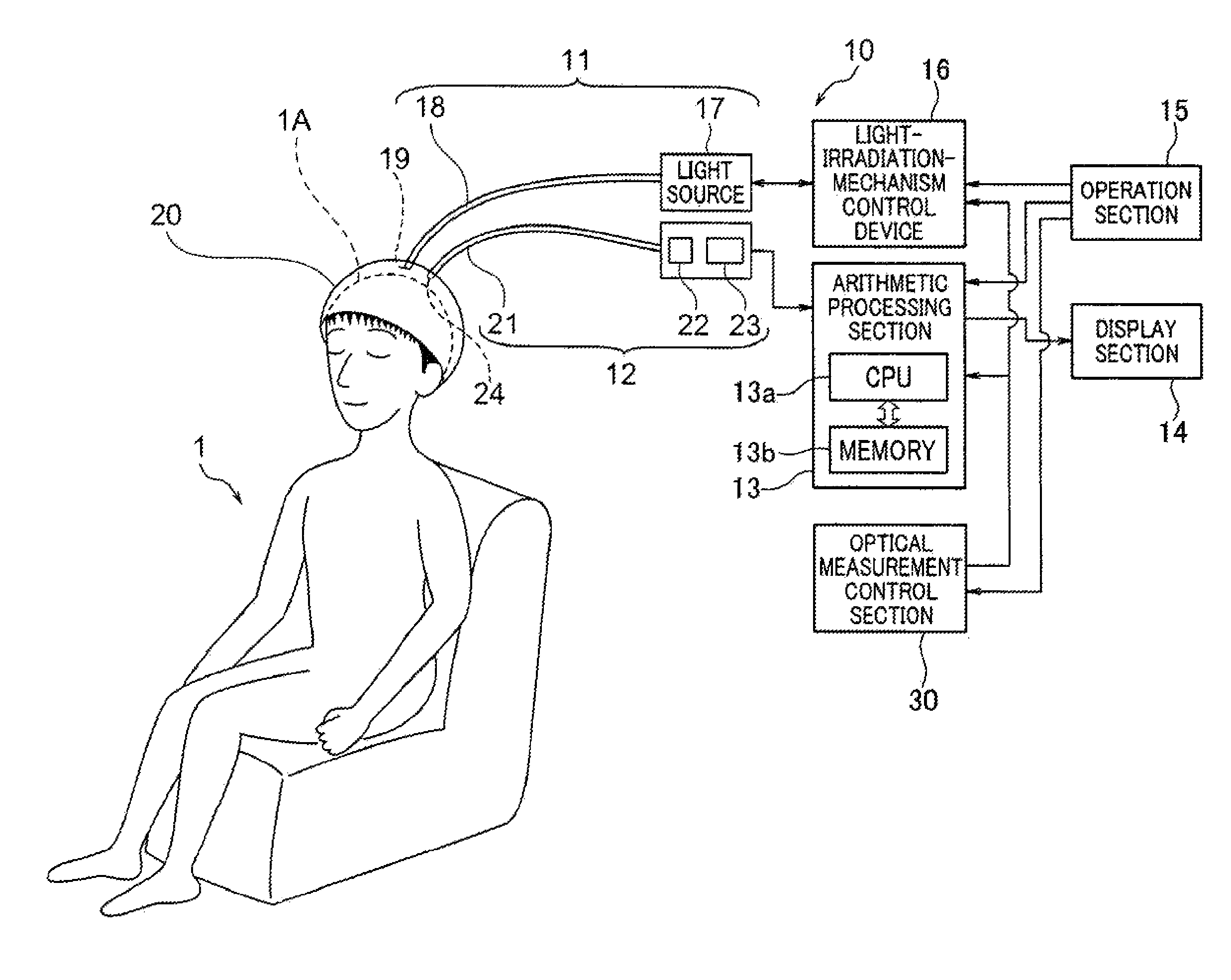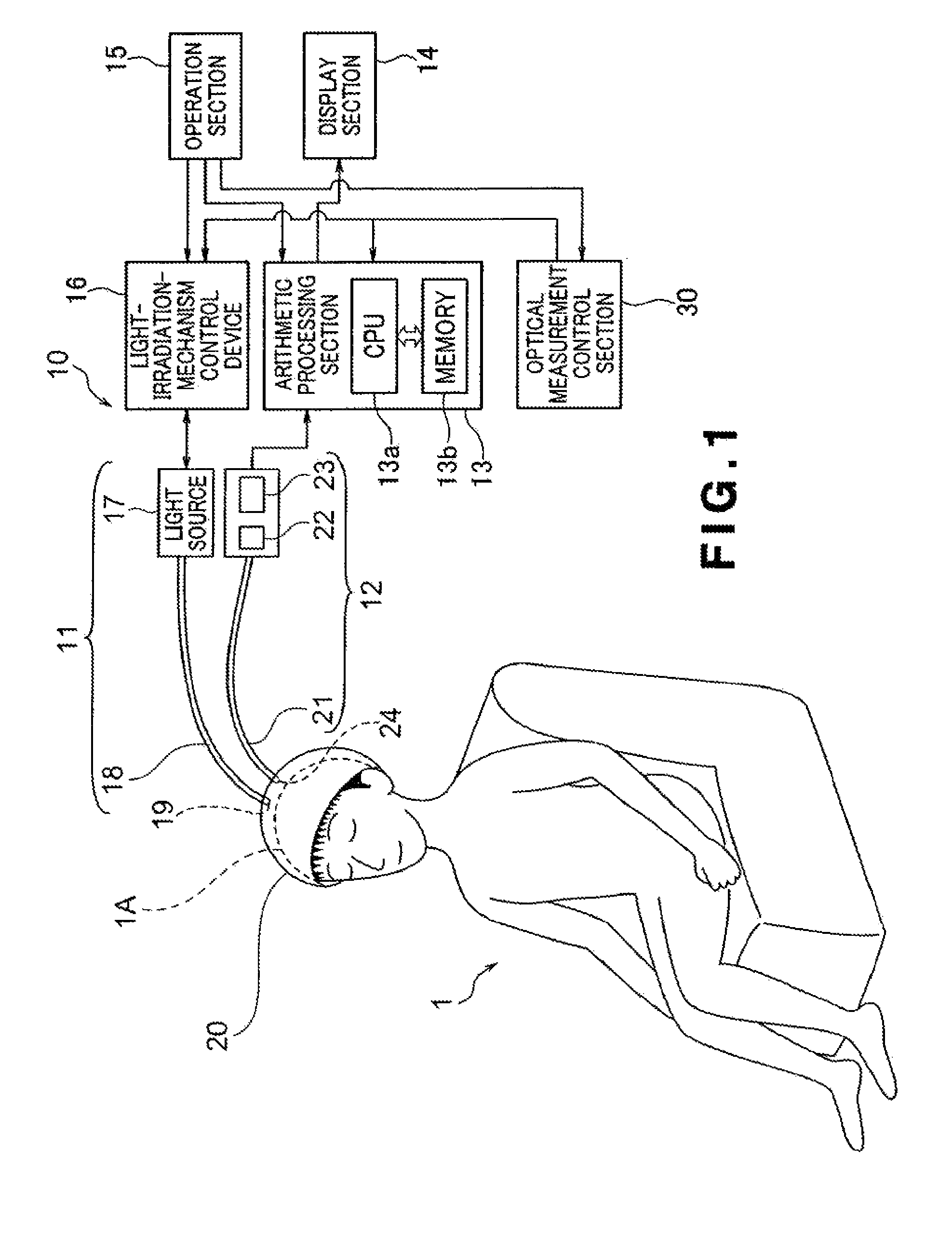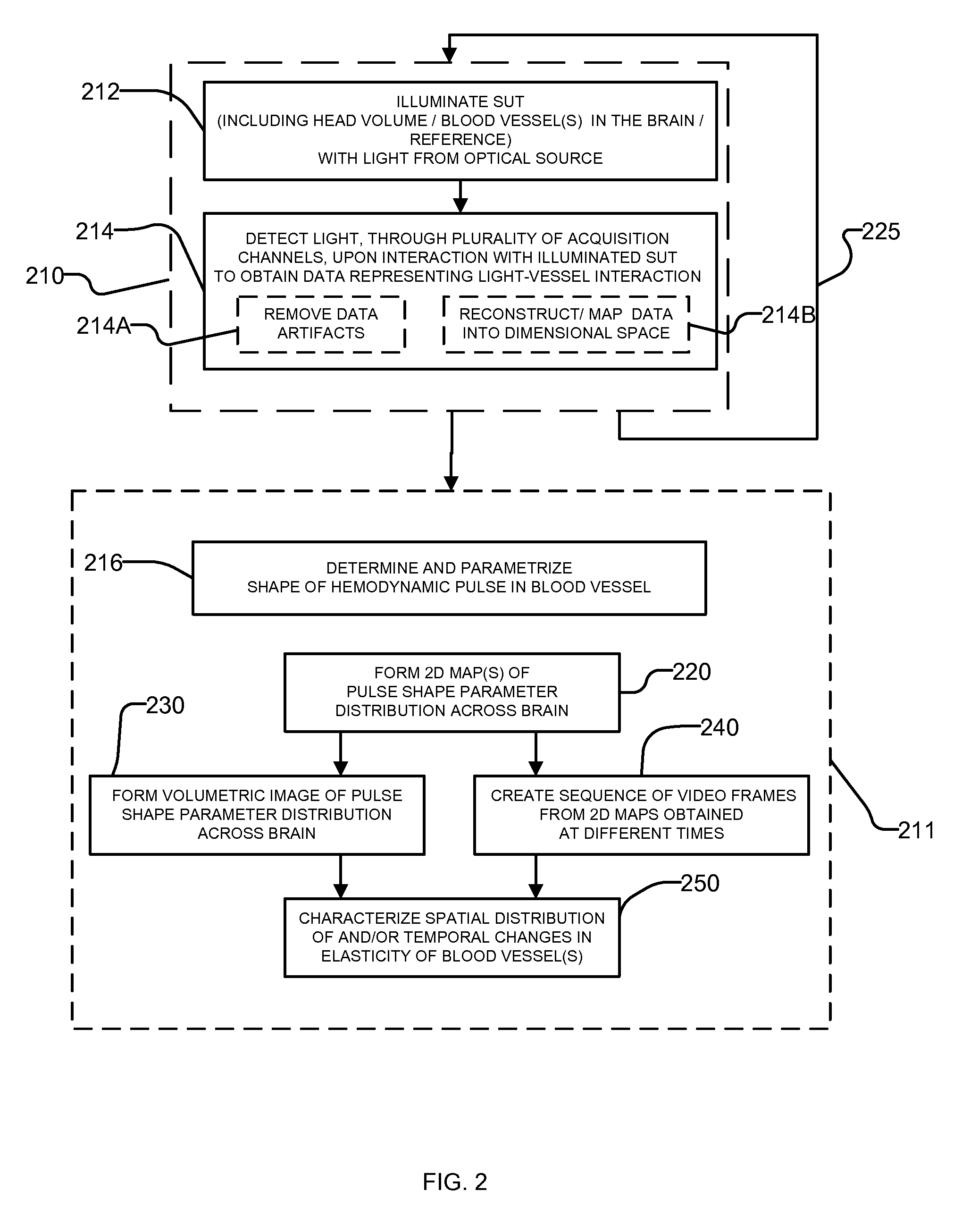Non-invasive optical imaging for measuring pulse and arterial elasticity in the brain
a technology of optical imaging and brain elasticity, applied in the field of systems, can solve the problems of limiting the use of continuous, non-invasive, portable, low-cost medical monitors, and inability to create accurate spatial maps, and fmri requires high-energy magnetic fields
- Summary
- Abstract
- Description
- Claims
- Application Information
AI Technical Summary
Benefits of technology
Problems solved by technology
Method used
Image
Examples
Embodiment Construction
[0023]Recent advances in brain imaging studies suggest that understanding brain arterial stiffness or, alternatively, arterial elasticity can be a powerful indicator of cerebrovascular disease. The present invention provides a system and method for the incorporation of pulse data in brain mapping obtained with the use of diffusive optical methods to provide information about vascular health of different regions of the brain. Accordingly, a three-dimensional (3D) brain-mapping technique of the present invention makes use of optical tomography (OT) or diffuse OT (DOT) to acquire data associated with propagation of the pulse waveform through the brain.
[0024]Optical tomography and, in particular, DOT are centered around the idea that light passes through a body in small amounts and emerges bearing clues about tissues through which it has passed. These optical methods utilize non-ionizing NIR light, which is well tolerated in large doses by brain tissue, and have been recognized by some ...
PUM
 Login to View More
Login to View More Abstract
Description
Claims
Application Information
 Login to View More
Login to View More - R&D
- Intellectual Property
- Life Sciences
- Materials
- Tech Scout
- Unparalleled Data Quality
- Higher Quality Content
- 60% Fewer Hallucinations
Browse by: Latest US Patents, China's latest patents, Technical Efficacy Thesaurus, Application Domain, Technology Topic, Popular Technical Reports.
© 2025 PatSnap. All rights reserved.Legal|Privacy policy|Modern Slavery Act Transparency Statement|Sitemap|About US| Contact US: help@patsnap.com



